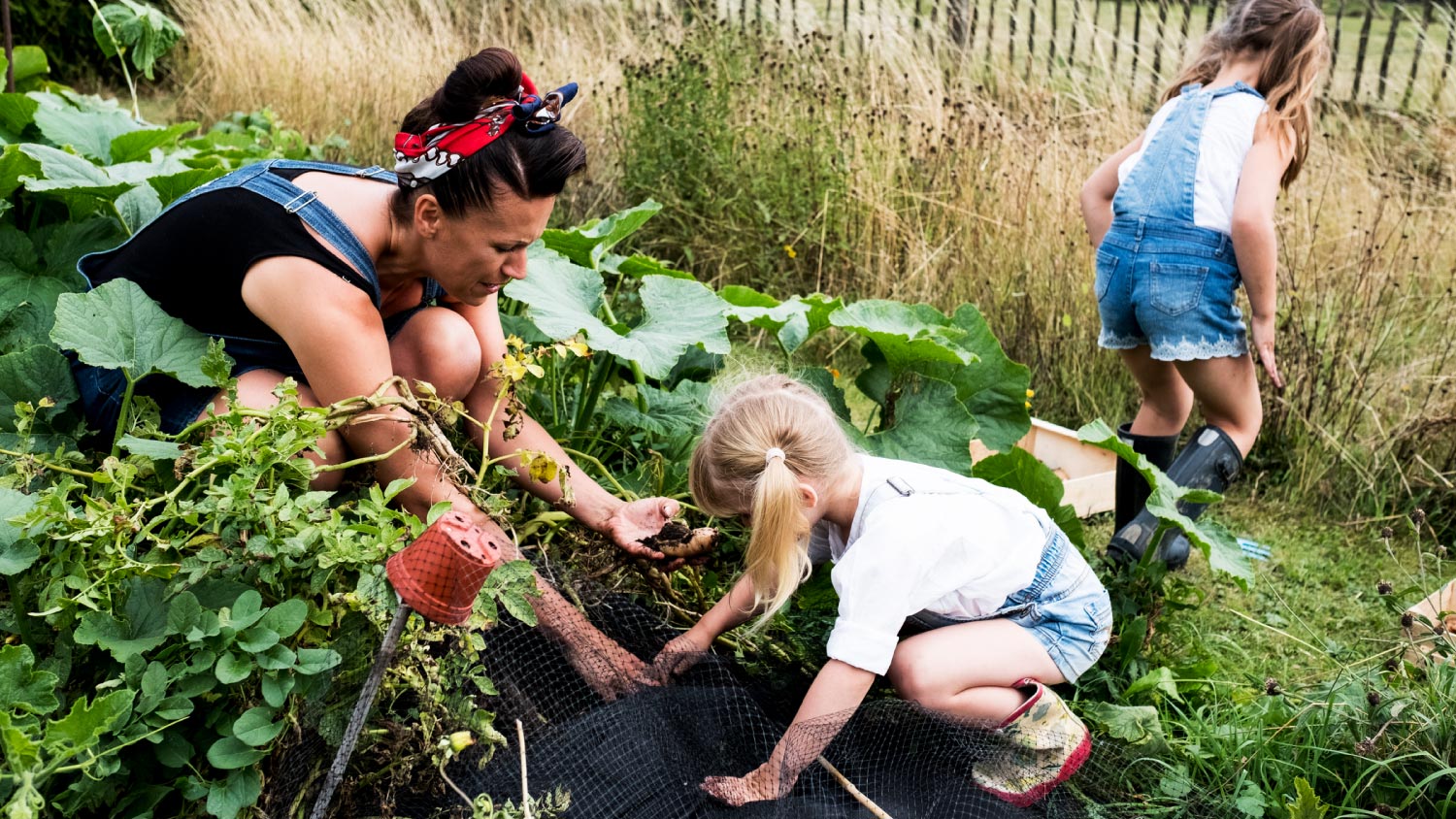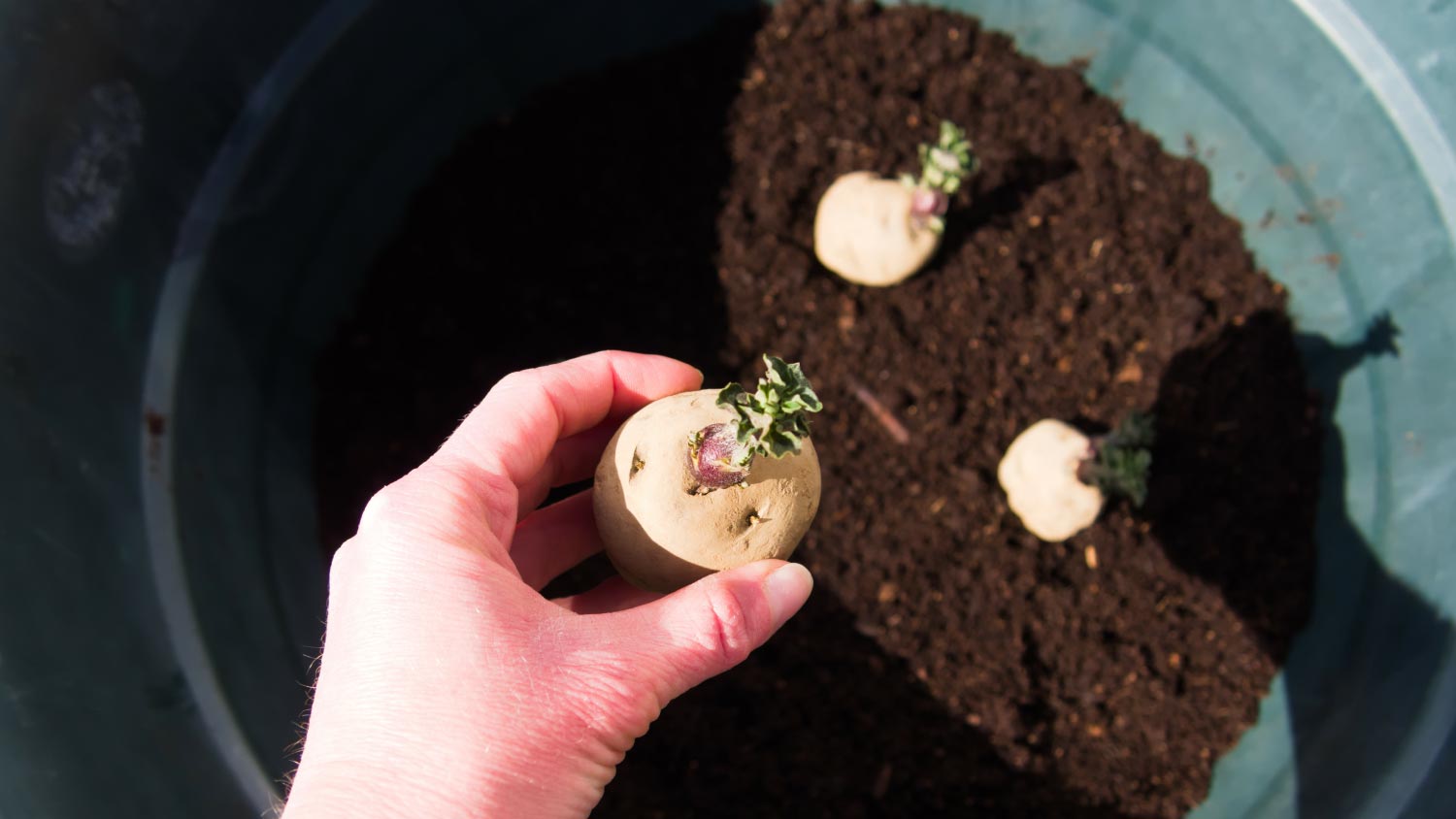
How much do hedges cost? Discover average hedge installation prices, key cost factors, and tips to save money on your landscaping project.
Whether you say po-tay-to or po-tah-to, here’s how to care for this multipurpose crop


Potatoes: Boil them, mash them, stick them in a stew—you’d be hard-pressed to find a more versatile vegetable. Here are our top tips for growing this tasty tuber.
If you’re interested in growing potatoes, you won’t find them in the same display you got your green bean seeds from. Instead, seek out seed potatoes—a.k.a. potatoes designated for starting a new crop. You can typically find these in your local plant nursery or garden center. For the best results, look for certified seed potatoes that the government has declared disease-free.
If you plant a large seed potato with more than a few eyes, which are the small bumps that grow into sprouts, you’re not likely to yield an abundant harvest. It will lead to a single plant with many stems, each competing for sunlight and nutrients. For large, healthy potatoes, cut your seed potatoes into pieces with no more than three eyes. After making the cuts, set them out in the sun or in a room that’s at least 70 degrees Fahrenheit for three to five days. This will “cure” the pieces and help prevent rot once they’re in the soil.
If you spot sprouts in your pantry’s potato pile, these aren’t ideal for starting a new crop. Most grocery store potatoes contain sprout inhibitors to maximize their shelf life, so they won’t be strong growers once they’re in the ground. Even if you purchase organic potatoes without the growth-inhibiting chemicals, they could contain diseases from the previous year that would affect the new crop. Again, opt for certified seed potatoes to avoid any issues.

When you’re creating a backyard vegetable garden, location is crucial. Potato plants need lots of sun, so you’ll need to keep that in mind when you start your first crop. Be sure to plant them in a spot that gets at least six hours of sunlight per day. If your garden area doesn’t get sufficient sunlight, consider planting them in containers and placing them in a sunnier location.
Like other crops, potatoes thrive in moist soil. However, if you plant your seed potatoes in excessively wet soil, it could lead to rot. If it’s wet to the point where it sticks together and is difficult to work with, wait for the soil to dry out a little before planting.
The soil temperature is the most important condition to consider when planting new potatoes. Even when outside temperatures get warmer, the in-ground soil could still be too cool for a successful crop. Ideally, the soil should be at least 50 degrees Fahrenheit before planting your seed potatoes. You can measure this with a specialized soil thermometer. In a pinch, an instant-read kitchen thermometer will work as well.
Low-quality soil can severely limit the yield of your potato harvest. Soil that’s heavily compacted or low in organic matter isn’t ideal for growing potatoes—or any type of vegetable garden for that matter. If you don’t have healthy soil, you’re better off planting in containers or in a raised garden bed.
While there are a few methods you can use to plant potatoes, the most effective method is to dig trenches and plant them in rows.

If your outdoor space isn’t equipped for in-ground planting, or if you don’t have healthy soil, you don’t have to settle for a potato-less harvest. While the traditional trench method remains superior, you can still have luck growing potatoes in containers or grow bags. Be sure to water often and keep the soil moist, as container soil will dry a lot quicker than in-ground soil.
Potatoes are happiest during cooler weather, though they can also grow in warmer climates. The most important thing to avoid is frost, which will kill your crop and prevent any new growth from happening. If you’re in a cooler climate region, always wait until the danger of frost has passed (especially for in-ground potatoes). For container potato plants, you have more leeway—just be sure to bring them inside if there’s a chance of frost.
There are hundreds of potato types to choose from, each with its own time period from plant to harvest. Generally, you can start harvesting your vegetable garden about two to three weeks after the plants finish flowering. After the vines die out, the potato is fully mature. Once they’re ready, lightly dig around the plant to remove the potato. Start with the big potatoes first, leaving the smaller ones in the ground to grow a bit more.
From average costs to expert advice, get all the answers you need to get your job done.

How much do hedges cost? Discover average hedge installation prices, key cost factors, and tips to save money on your landscaping project.

A landscape designer can elevate your outdoor space and bring your vision to life. Use this landscape design cost guide to budget for your next project.

Leveling your yard can help with drainage and prevent damage to your home. Learn the cost to level a yard in Columbus, OH, and what factors can affect the price.

If you have a hilly property, erosion can threaten your drinking water, soil, and plants. Fortunately, these tips can teach you how to stop erosion on a slope.

Want a healthy, green lawn fast? Learn how to lay sod in just one day so that its grass grows into a robust lawn you’ll enjoy for many seasons to come.

There are several ways to remove a lilac bush, including root removal and chemical intervention. Check out our guide to learn how to remove a lilac bush.